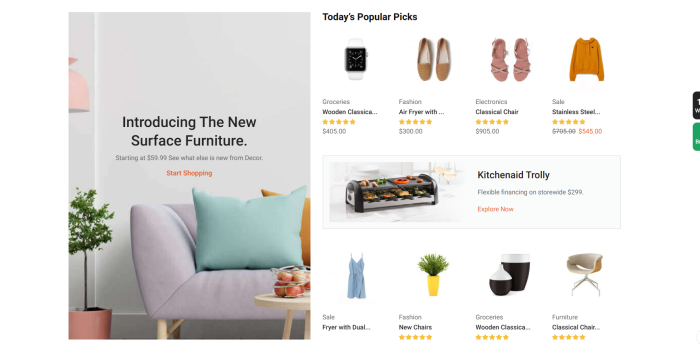What you can incorporate in a website design can have a definite impact on its…

11 Free Website Builders to Try in 2023
Before we go any further, let’s get the whole ‘all you need to make a website is a basic text editor and a browser’ thing out of the way before we start:
Yes, it’s true, you can make a fully functioning, good-looking website with NotePad or TextEdit, but you also need a not inconsiderable level of knowledge and skill. And even the best coder will take longer without some tools. So let’s agree that’s not a very helpful answer and get on with looking at what you’re here for.
If you can stretch your budget at all, even a very modest amount will considerably widen your range of choices. It is worth noting that some website platforms that do not have free versions, for example, Shopify and Squarespace, have free trials. These may be worth investigating before you commit to a final decision.
But if your budget is a maximum of $0.00, then there are still some options available.
What to Consider Before Choosing a Free Website Builder
A few critical decisions need to be made before you start looking at web builder tools. To choose the right tool for the job, you need to be clear on what that job actually is.
Intended Purpose of Your Website — First and foremost, what is your website for? Are you crafting a personal blog, showcasing a portfolio, or perhaps setting up an ecommerce site? Different website builders cater to specific needs. Pinpoint your website’s primary objective, and this will be your first step in narrowing down your options.
Required Features — Next, decide what functionality you will want. Maybe you need a contact form, or perhaps a gallery slider is a must-have. Different website builders offer varied features in their free plans. Match your list with the tool’s capabilities. Remember, it’s not just about what you need now but also the features you might require in the near future.
Level of Customization — How much control do you want over the design? If you have a particular design in mind, you’ll want a builder that offers a high level of customization. Some tools provide drag-and-drop flexibility, while others rely on preset templates. Decide how bespoke or templated you want your design to be.
Advertisements and Branding — Free plans often come with a catch – ads. Some website builders might place a small banner on your site, while others could have more prominent advertising. Also, free versions don’t permit custom domain names, so your URL will look something like “yourwebsite.buildername.com.” Decide what you’re comfortable with, especially in terms of professionalism and aesthetics.
Domains and Hosting — Building the site is only part of the puzzle; you need to publish it too. That means it needs hosting and a domain. Acquiring a suitable domain is one of the first things many businesses do, so perhaps you have one already. Maybe you have hosting too, and you’re looking to make a new version of your site because you don’t like whatever free option your hosts offer.
The tools we will look at are all-in-one platforms, but some free to self-host options exist.
Extras — If you are looking at an all-in-one platform, you should consider what else you might need from them. You may want a mailing list, more than one email address, SEO tools, or other integrated marketing tools, for example.
Effort Level — No one wants to make life more complicated than it needs to be, but you should consider the required skill level you are comfortable with. Are you happy with a simple drag and drop, or do you want the option of getting your hands dirty with an API? (No judgment here.)
Long-Term Goals — Think ahead. Will you eventually want to upgrade? Maybe you’re planning to grow your blog into a digital magazine or expand your online store. Ensure the platform you choose can scale with your ambitions. Transitioning later can be a chore, or even impossible, without a complete rebuild, so planning for growth now can save you potential problems down the road.
That’s the preliminaries out of the way, so now let’s look at what’s available…
11 Best Free Website Builders in 2023
Wix
Wix is one of the biggest names in the world of free website builders. You can use it to make pretty much any kind of site. You can start with a template and customize it or ask Wix’s AI to design one for you. It has an intuitive drag-and-drop interface and offers a broad range of templates, apps, and widgets. If you’re feeling adventurous, you can add your own javascript.
It’s very flexible but also easy to use whether you’re a complete beginner or a seasoned designer. It has lots of resources, including customizable templates suited to various niches and plenty of how-to articles to help you.
On the downside, with the free plan, you do not get a custom domain, Wix ads appear on every page, online payments are not included, Google Analytics are not included, and you are restricted to a maximum of 500mb bandwidth (which is less than you think).
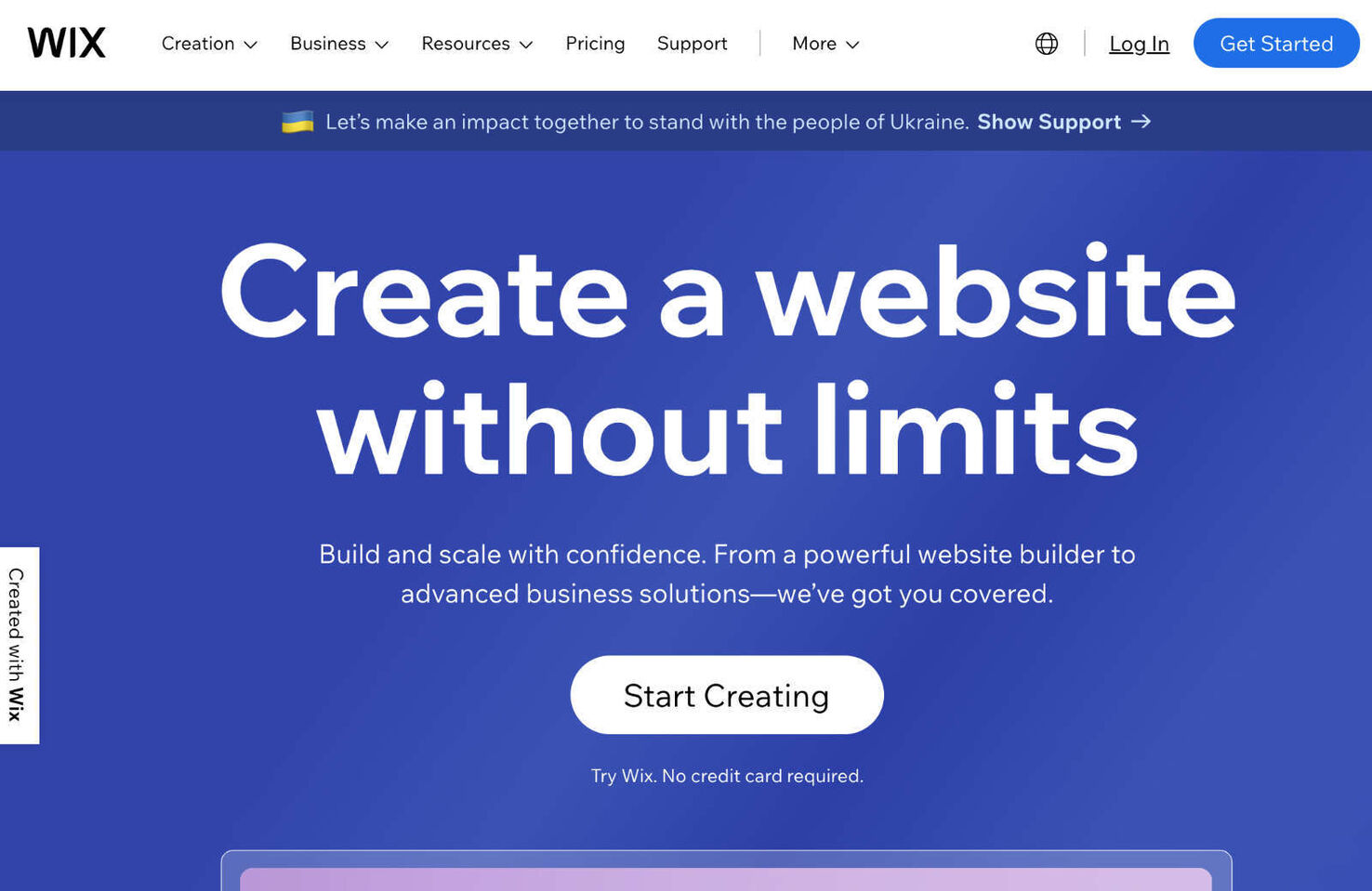
WordPress.com
WordPress.com is an excellent platform for website building, with plenty of themes and plugins to customize. Its social sharing tools offer greater reach, and the vast WordPress community provides extensive support.
However, mastering it may take time, and the free plan comes with ads and restrictions. Also, it doesn’t offer the same level of control as WordPress.org. Nonetheless, it’s a great platform to create a first website.
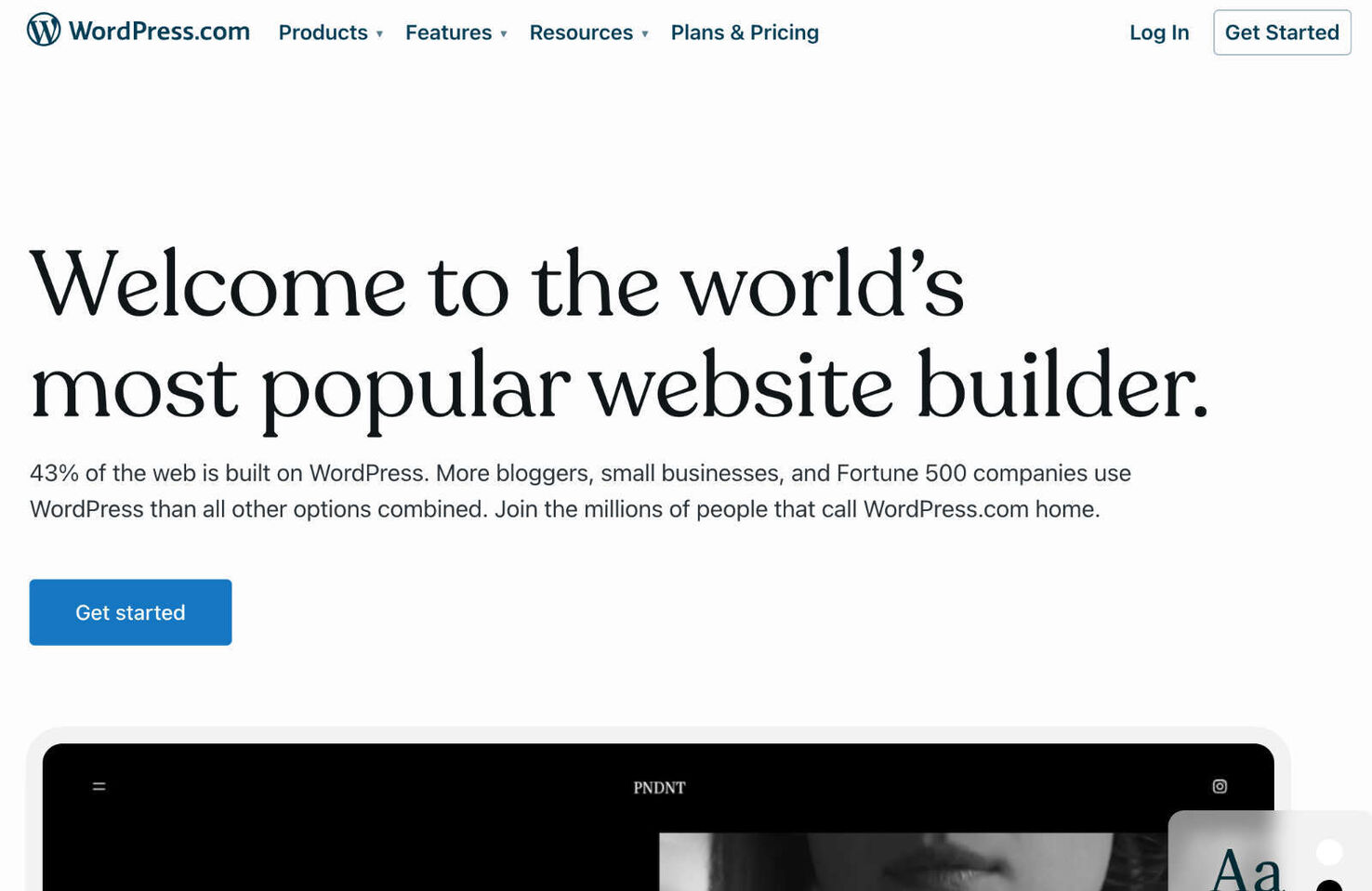
Weebly
Weebly is a simple and powerful website builder with ecommerce capabilities and automatic mobile optimization. The Weebly App Center offers tools to enhance site functionality, and it has an SEO foundation in place.
However, customization options are restrictive, and ecommerce tools are not as comprehensive as specialized platforms. Weebly is a solid choice for small businesses and personal sites.
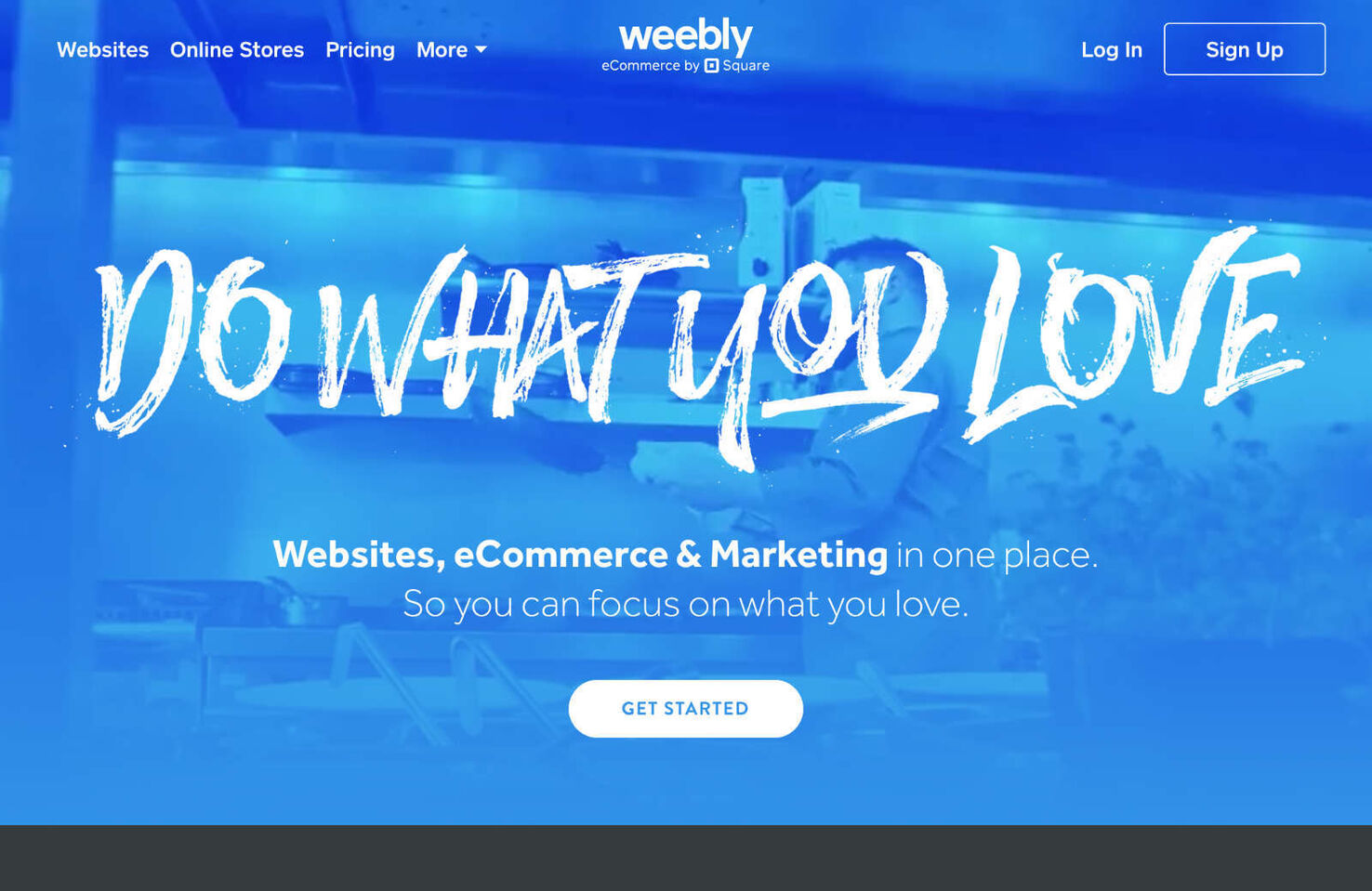
Webflow
Webflow offers coding perks without the need to code. Visually manipulate your site’s design with full control and distinctive designs. However, it’s best suited for those with a foundational understanding of web design principles.
In addition, Webflow’s more advanced features come at a cost. On the free plan, you do not get a custom domain. There are Webflow badges on all pages, you have a limited number of static pages, and no SEO tools.

Jimdo
Jimdo is a user-friendly platform with an intuitive interface. It optimizes sites for mobile devices and offers basic SEO tools. However, customization options and ecommerce tools are limited, and ads are displayed on your site. You will need to upgrade if you want to use a custom domain.

Webnode
Webnode is an excellent option for building websites quickly and easily. It has over 40 million registered users, the ability to create multilingual sites effortlessly, and offers integrated SEO tools and responsive designs.
However, ecommerce support is relatively basic, templates are not customizable, and other customization options are limited. In addition, the free version has ads and doesn’t allow custom domains.
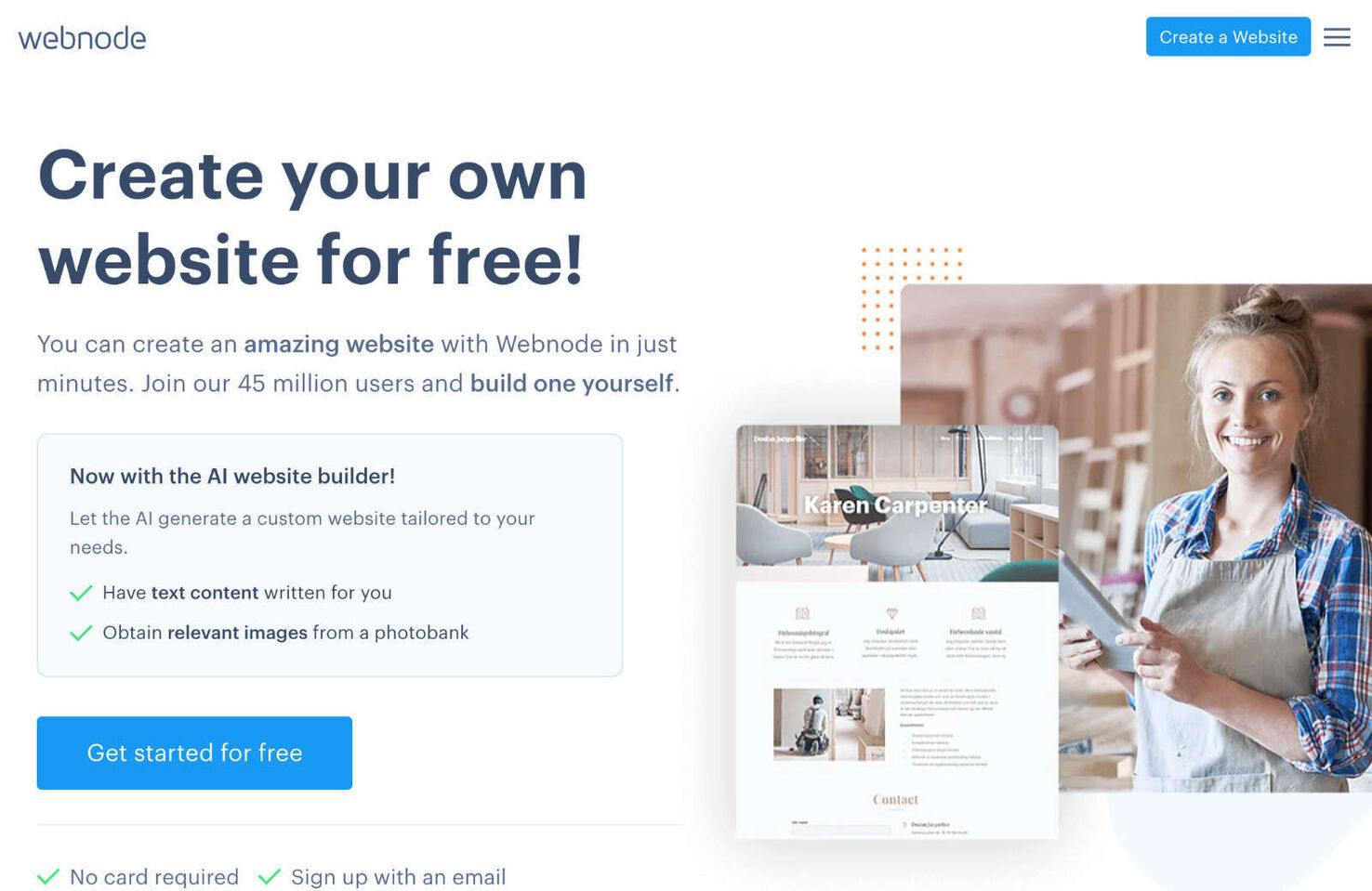
Hubspot
HubSpot’s website builder offers an all-in-one approach to website design and marketing. It includes CRM, email marketing, and analytics in the free tier. The drag-and-drop editor and responsive design create a seamless experience for visitors on all screens, with added SSL security.
However, the free version has HubSpot branding and limited customization options. Paid plans offer more advanced features but can be costly.
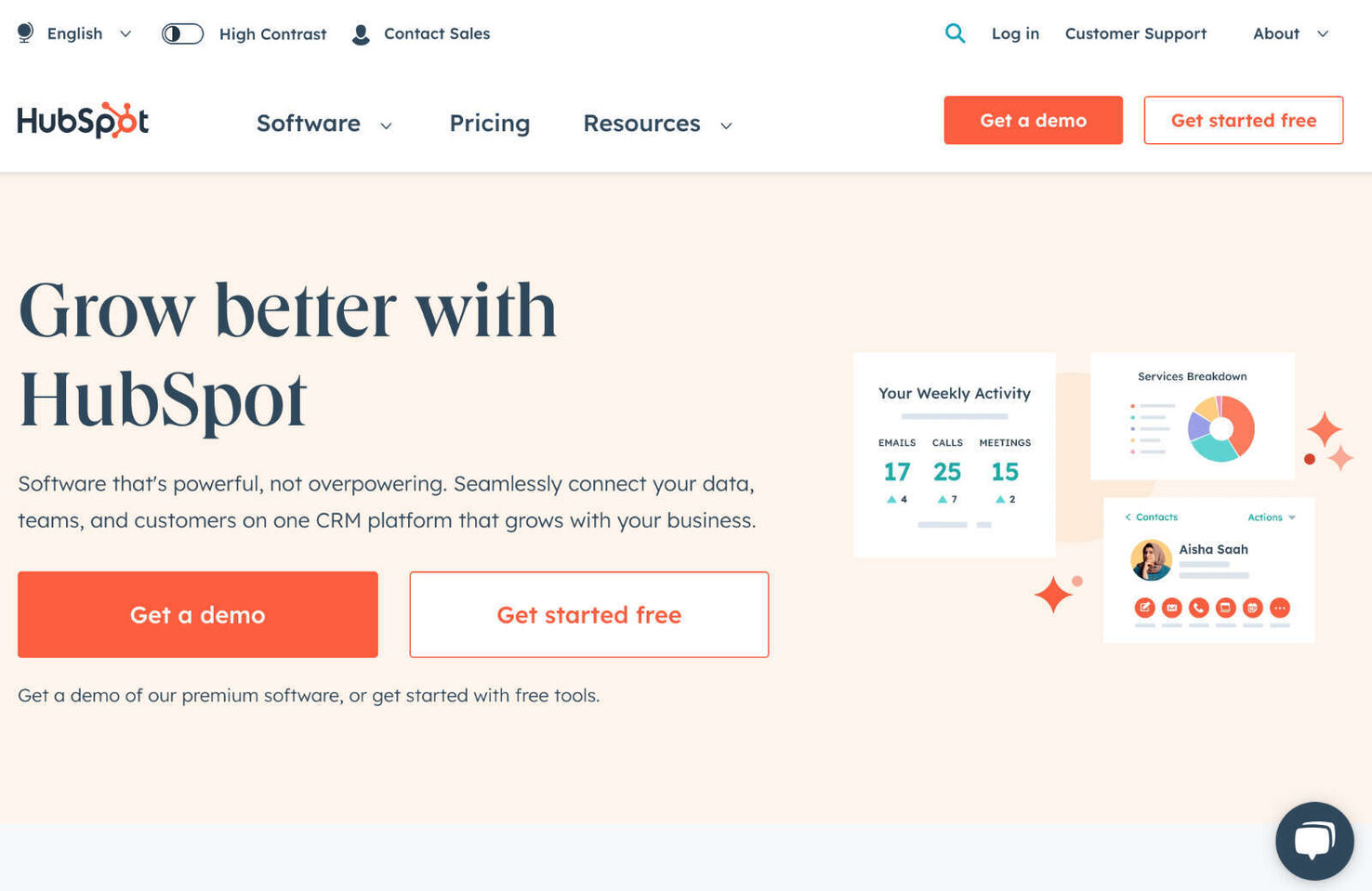
Strikingly
If you’re looking for an easy-to-use website builder that emphasizes engaging single-page designs, Strikingly might be the perfect choice for you. With built-in analytics, 24⁄7 support, and social media integration, it’s an excellent option for anyone looking to build a website without a steep learning curve.
However, the free tier comes with Strikingly branding, limits you to a single page, and only allows you to list a single product on your online store. Additionally, while Strikingly offers a variety of templates, customization options are somewhat limited compared to more advanced platforms.
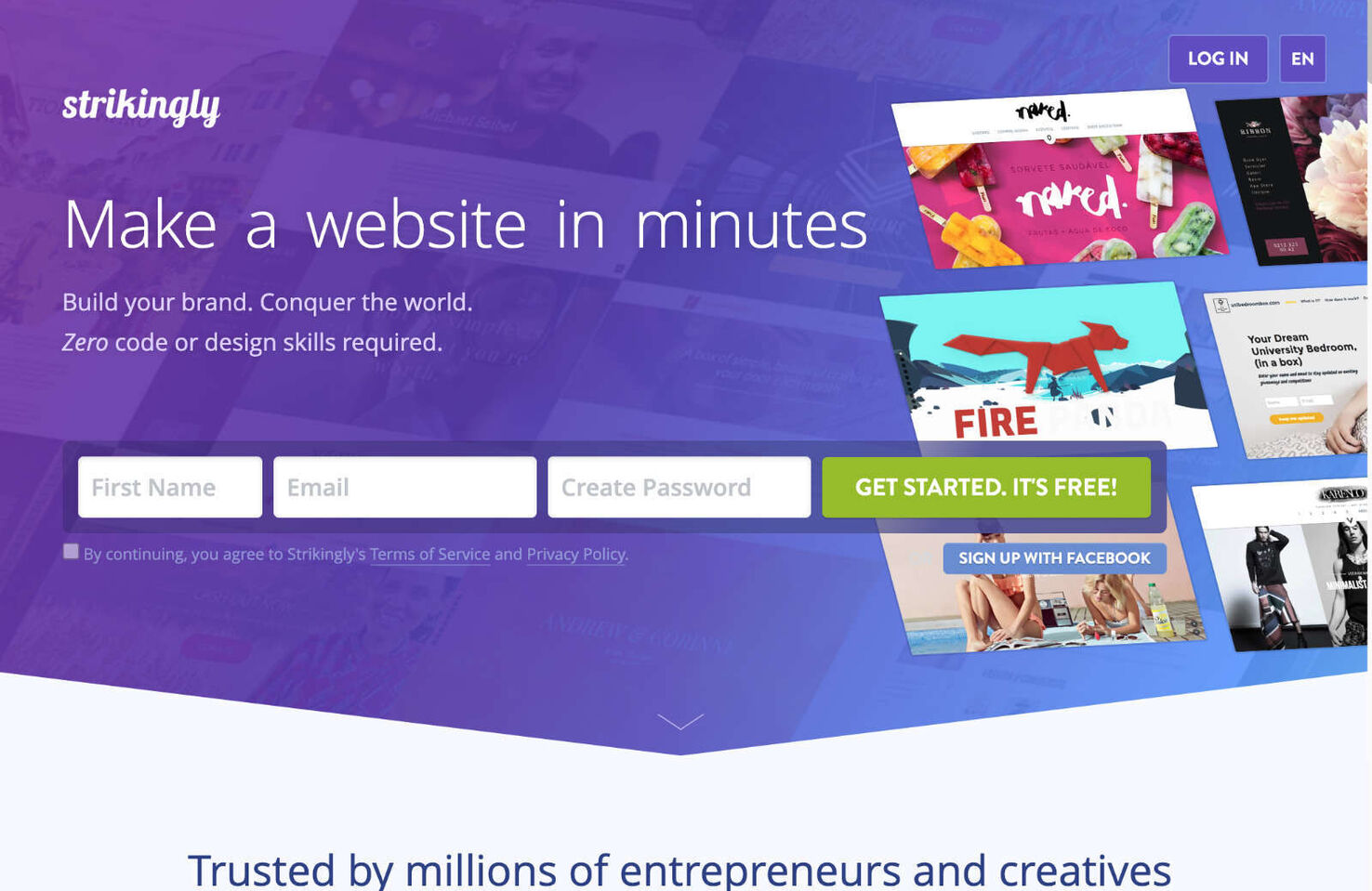
Site123
Site123 is a user-friendly website builder with multilingual capabilities and basic SEO tools. It offers a library of icons and fonts to personalize your site.
However, the free plan includes Site123 branding, ecommerce features are limited, templates can be restrictive, and storage/bandwidth caps may limit high traffic or media content. And, you guessed it: no custom domain.
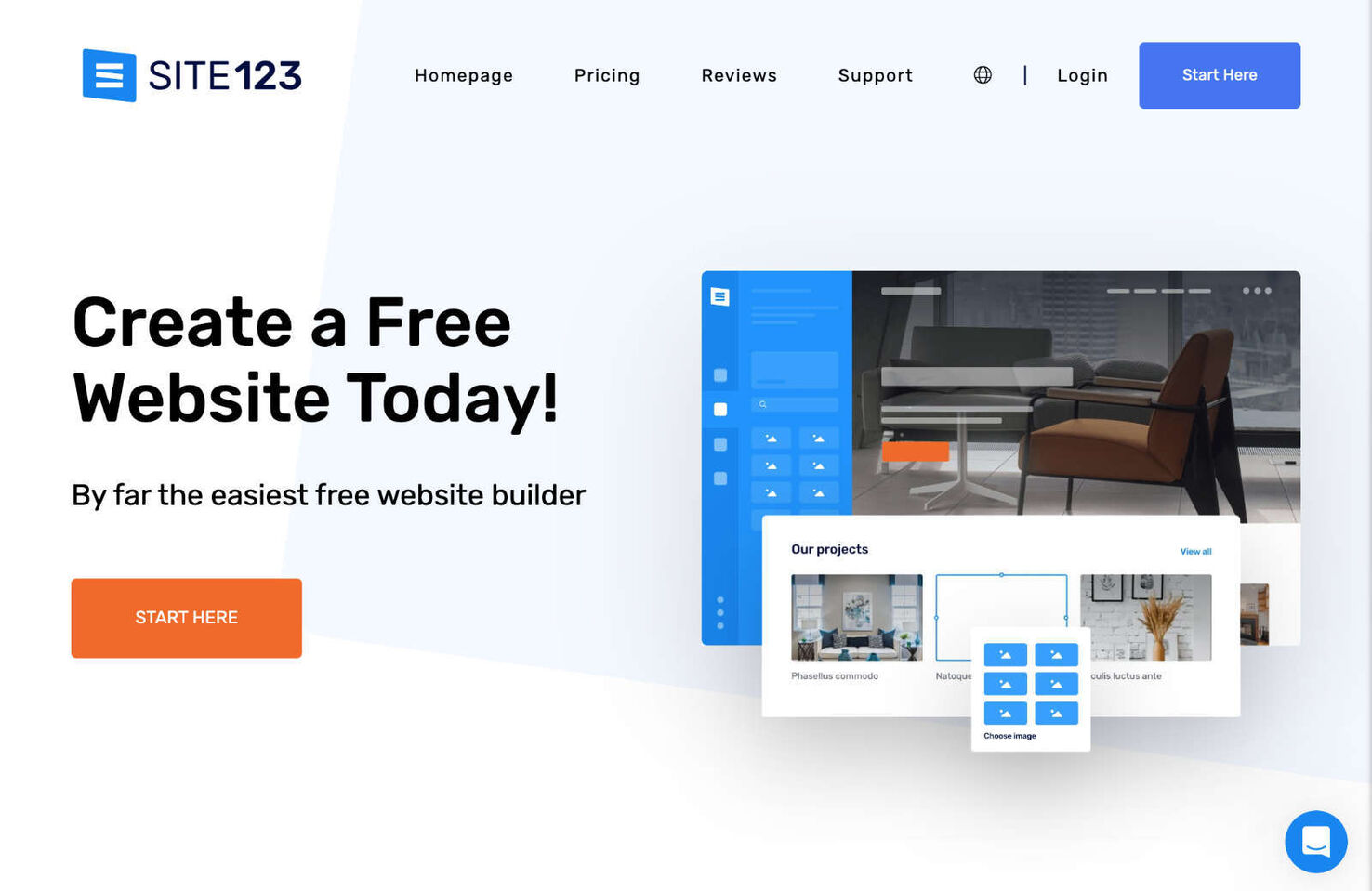
GoDaddy
GoDaddy’s free plan is user-friendly for beginners, with integrated features like contact forms, SEO tools, and email marketing. Templates are mobile-responsive, but customization options are limited. Ad placement and the lack of a custom domain may detract from a professional look.
The rigidity of the templates might feel constraining for some designers who are looking for more creative freedom, and the limited SEO customization is slightly disappointing.

Ucraft
Ucraft’s free plan offers sleek templates, a user-friendly drag-and-drop builder, and basic SEO features.
However, the branding watermark, page limitations, and ecommerce restrictions may pose a challenge for some users.
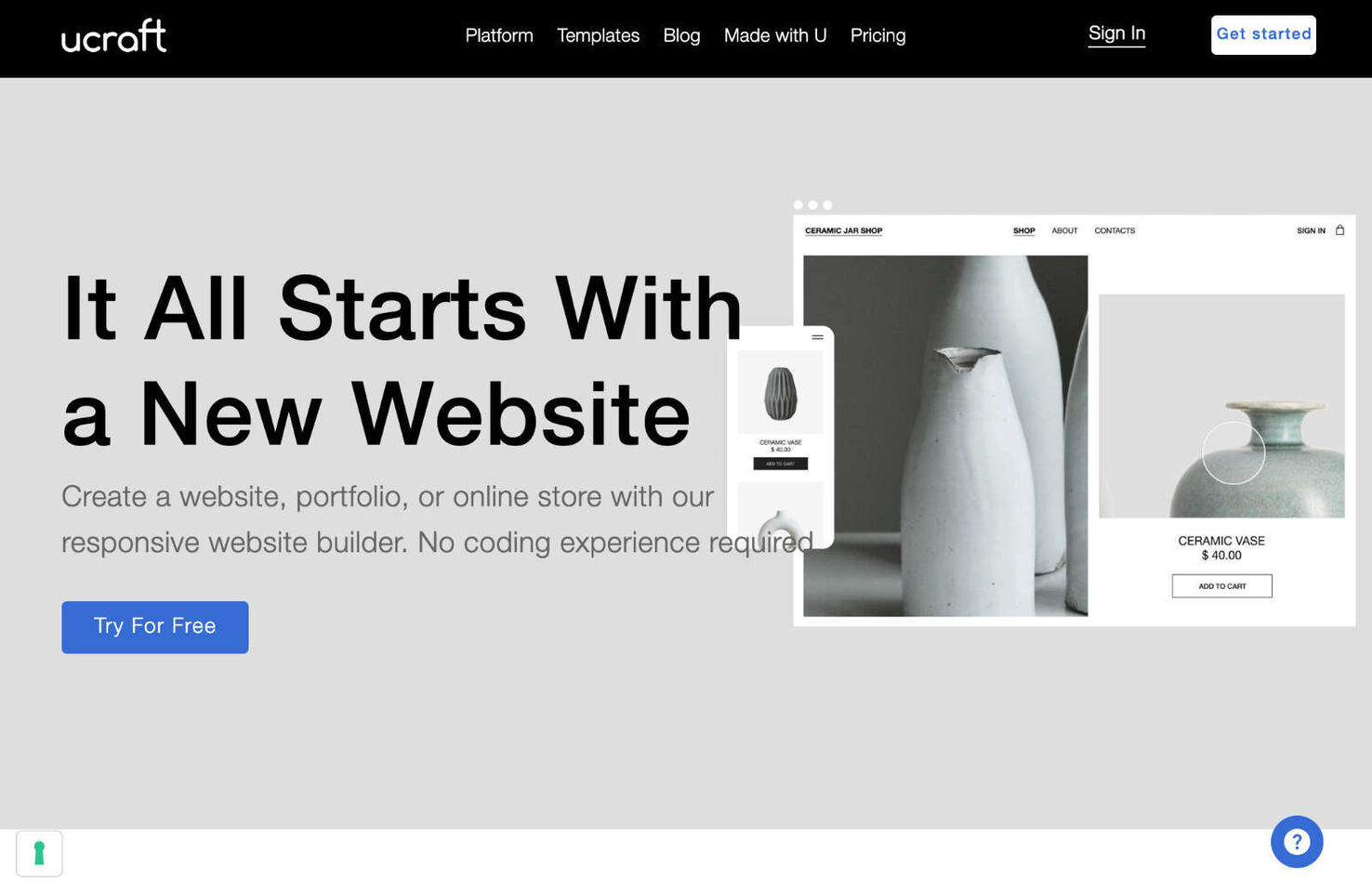
Conclusion
Remember, while free website builders are a fantastic starting point, they come with trade-offs. None of the website platforms we looked at allow you to have your own custom domain on a free plan. If your site is for a business, you may want to think hard about whether this is something you are prepared to accept.
Having said that, these free versions are a great way to test out a platform and see if it is for you.
Louise North
Louise is a staff writer for WebdesignerDepot. She lives in Colorado, is a mom to two dogs, and when she’s not writing she likes hiking and volunteering.
#Free #Website #Builders

